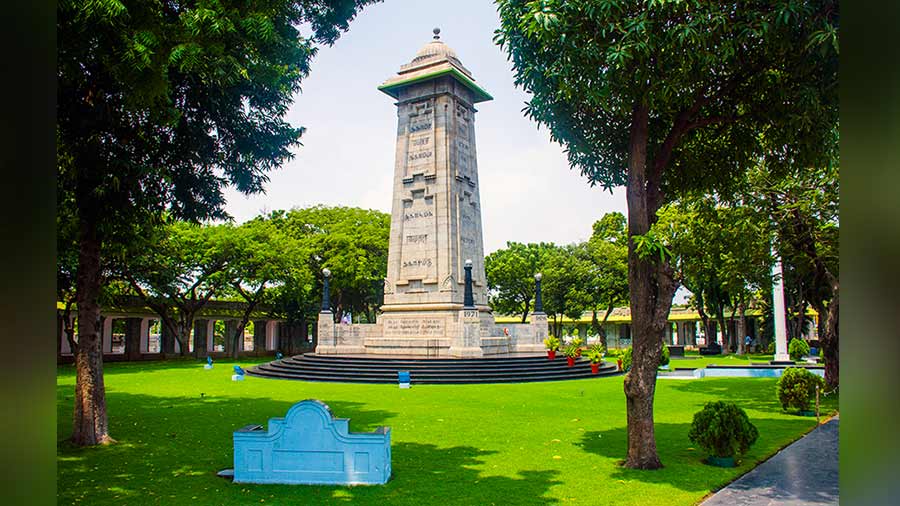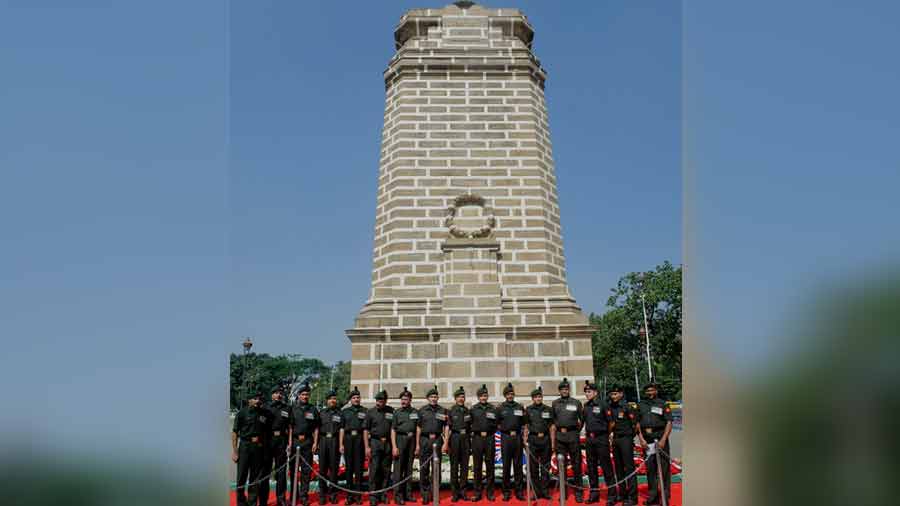Over a million Indian soldiers served the British military forces during World War I. Over 70,000 died fighting in different war theatres spread across Europe, the Middle East and Africa. Today, many major cities of the subcontinent house monuments in memory of the fallen soldiers of World War I. It ranges from the towering Glorious Dead Cenotaph, Kolkata, to the ornate Teen Murti Memorial in Delhi. The cantonment town of Pune also houses a pair of small but elegant memorials.
Chennai also has its own, known as Victory Memorial. It is located on a traffic roundabout at the south-eastern corner of Fort St. George. It also marks the northern end of Chennai’s famed Marina Beach. Before the memorial came up, the open roundabout served as a meeting point of British officers and army men. It is where the British officers met the handful of European ladies of the city. No wonder it was a place of romance, gossip, quarrels and not to mention, scandals. As the popularity of the spot grew, so did the ornamentation of the roundabout. A bandstand came up and so did ornate lamp posts and the place came to be known as the Cupid’s Bow.
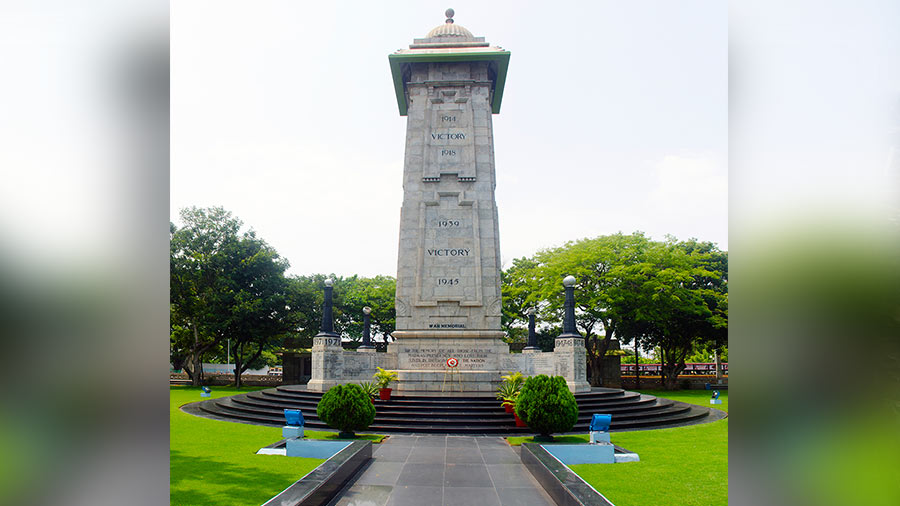
A closer view of the monument
The memorial came up in 1936 in memory of the fallen soldiers of Madras Presidency, who died fighting in war theatres spread across Europe, the Middle East and Africa during World War I. Later after the end of World War II, it served as a common memorial for both the World Wars. Further, after Independence, it honoured the fallen soldiers of independent India. List of the names of the fallen soldiers of 1948 Kashmir aggression, 1962 China War and the Pakistan War of 1966 and 1971 has also been included.
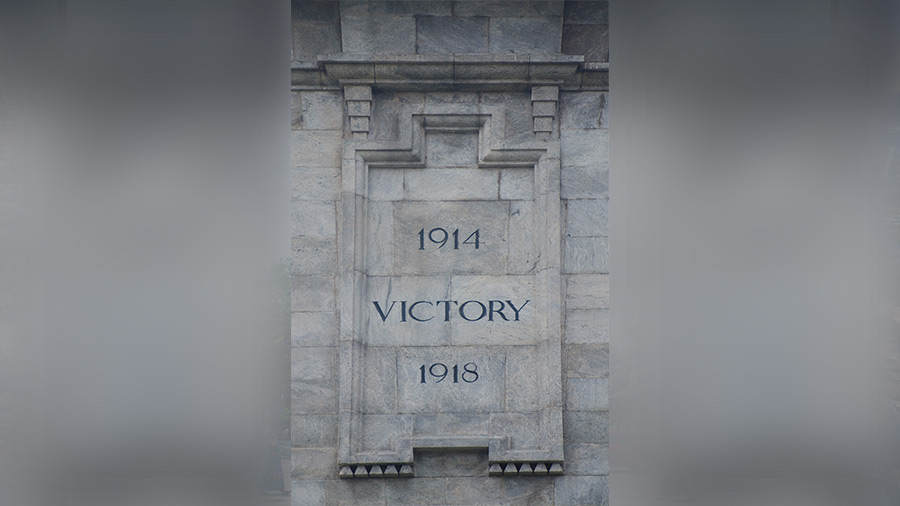
A plaque with the word ‘Victory’ written on it
The towering marble memorial has inscriptions in English, Arabic, Tamil and Telegu on all four sides. The upper portion contains a plaque with the word ‘Victory’ with the years 1914 and 1918 written on it. Below is a similar plaque with the years 1939 and 1945. The base contains the inscriptions of “To the memory of all those from the Madras Presidency who lost their lives in the service of the nation and post independence martyrs’. The same is repeated in the other languages. Short extension walls from the corners carry the name of the units that fought under the Madras Presidency. The walls lead to stout pillars at the four corners. These pillars contain the names of martyrs of Independent India.
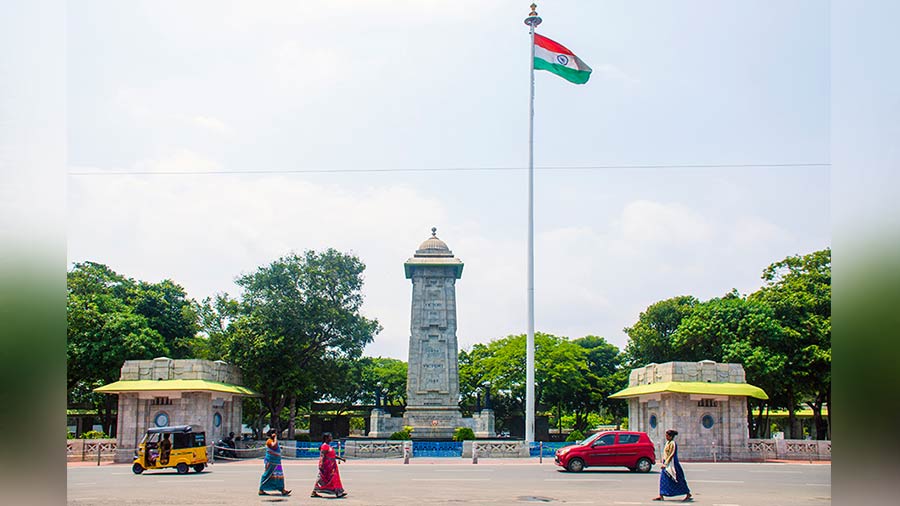
A tricolour flutters on a post near the memorial
The entire complex is surrounded by a circular pillared pathway. The memorial stands at the centre surrounded by manicured lawn dotted with flower beds. Sadly, entry beyond the boundary is prohibited. A tricolor flutters on a post above the memorial. Every year, on the second Sunday of November, wreaths are laid to honour the fallen soldiers. While World War I ended on November 11, 1918, and the day is celebrated as Remembrance Day, the celebrations are usually carried out on the second Sunday of November, which is known as Remembrance Sunday.
